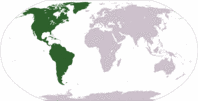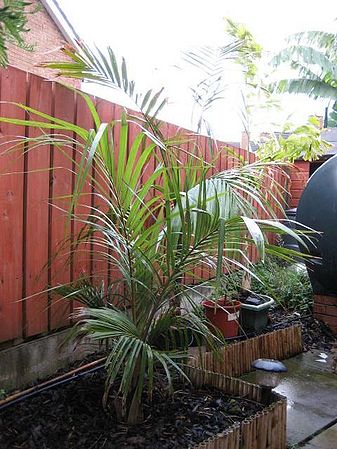Juania australis
| Juania (wahn-EE-ah) australis (aw-STRAHL-iss) | |||||||
|---|---|---|---|---|---|---|---|
 Jardin Botanico Nacional, Vina del Mar, Chile. | |||||||
| Scientific Classification | |||||||
| |||||||
| Synonyms | |||||||
|
| |||||||
| Native Continent | |||||||
|
| |||||||
| Morphology | |||||||
| |||||||
| Culture | |||||||
|
| |||||||
| Survivability index | |||||||
|
| |||||||
| Common names | |||||||
|
| |||||||
Contents
Habitat and Distribution
Palm endemic to the Juan Fernández Islands, in the Pacific Ocean, off the coast of Chile,Description
Stunning palm tree with a single trunk of about 12 m in height and 15 cm and 20 cm in diameter, dark green and shiny scars surrounded by fallen leaves, pinnate leaves between 3 m and 5 m in length, a bright green. The male flowers are yellowish-white and very fragrant, but the female flowers have no fragrance, it is a dioecious palm. The fruits are spherical red and almost 2 cm in diameter. Editing by edric.
Culture
Requirements for cultivation: is difficult to grow this palm tree as it requires a set of conditions that are only found in the wild. Hardiness: -6 ° C. Cold Hardiness Zone: 9b
For better cultivation and growth, we must provide the ideal conditions for this palm, that is, those of the island, that is, moderate temperatures, high humidity, frequent watering and wind. Combine all this in a semi-arid Mediterranean climate and Alicante is a hard work.
Regarding temperatures in Alicante, we will not have any problem in winter as the edge of the coast no frost occurs, recorded last year, one of the coldest lately, minimum of 2 ° C. Winter moisture remains high, in the range 60% -75% relative humidity. In summer it is where most problems can pose growing on the Mediterranean coast, due to the high night temperatures, although these problems are sweetened by being near the sea resulting temperature reduction, with a placement in full shade us maintains copies of Juania australis in a temperature variation of 25 ° C-30 ° C, and this despite the latter summer of 2003 has been the warmest in the last 15 years in the area. In summer the relative humidity of 70% to 80% higher than in winter favors the plant, even if we know not grow at temperatures above 25 ° C. In general in summer Juania australis have evolved better than their cousins the Ceroxylon with the Alicante weather. I have also tried to keep something that I have spoken on the island of Robinson Crusoe, it is to always keep the same orientation of the plant from birth when transplants are performed. Finally it should be noted that expectations of this palm in Alicante are few, depend on the acclimatization of these first examples. (See external link palmasenresistencia)
Comments and Curiosities
This is a monotypic genus.
Conservation: Endangered.
"For anyone trying to grow this palm, remember to use gypsum. Turns out that higher calcium availability inhibits root rot in avocados, it would be worthwhile to do this for this palm as well. Gypsum is the only way to add calcium without raising the pH." (Dr. Axel Kratel)
- IMAGE GALLERY
Photo by Phil Markey https://www.trebrown.com/ https://www.nature-expeditions.co.uk/
Photo by Phil Markey https://www.trebrown.com/ https://www.nature-expeditions.co.uk/
External Links
- Glossary of Palm Terms
- MODERN BOTANICAL LATIN
- "Just To Be Clear"
- THE ADVENTURE OF A LIFETIME!
- The Robinson Garden at Earlscliffe, Baily, Co. Dublin, Ireland Juania australis at 53º N latitude.
- https://www.youtube.com/watch?v=cKG9P0Dh2yU
- https://www.youtube.com/watch?v=R4ukVvtkspg
- Dublin, Ireland Juania australis at 53º N latitude. Video by Colin Wilson.
- http://palmasenresistencia.blogspot.com/2009/05/juania-australis.html
References
All information translated from the Spanish.
Phonetic spelling of Latin names by edric.
Special thanks to Geoff Stein, (Palmbob) for his hundreds of photos.
Special thanks to Palmweb.org, Dr. John Dransfield, Dr. Bill Baker & team, for their volumes of information and photos.
Glossary of Palm Terms; Based on the glossary in Dransfield, J., N.W. Uhl, C.B. Asmussen-Lange, W.J. Baker, M.M. Harley & C.E. Lewis. 2008. Genera Palmarum - Evolution and Classification of the Palms. Royal Botanic Gardens, Kew. All images copyright of the artists and photographers (see images for credits).
Many Special Thanks to Ed Vaile for his long hours of tireless editing and numerous contributions.












































































